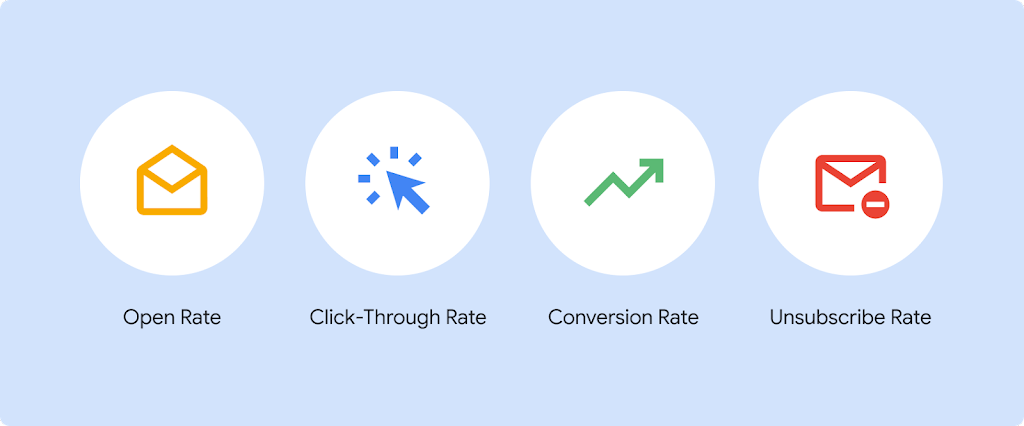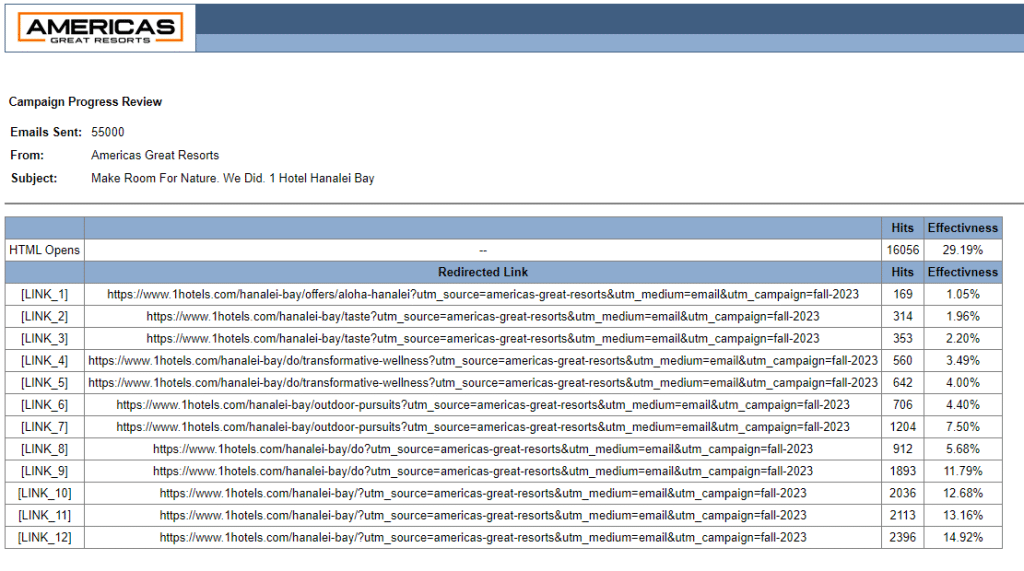
Table of Contents
1. And Then There Was Light: What is Artificial Intelligence
Artificial Intelligence (AI) is a branch of computer science dedicated to creating systems capable of performing tasks that typically require human intelligence. These tasks include learning, problem-solving, perception, decision-making, and language understanding. At its core, AI involves the development of algorithms designed to process, analyze, and act on data in a way that mimics human cognition, but at a scale and speed far beyond human capabilities. AI can be categorized into two broad types: narrow or weak AI, which is designed to perform a specific task (like facial recognition or internet searches), and general or strong AI, which aims to perform any intellectual task that a human being can. Today, AI technologies underpin many everyday services and systems, from virtual assistants and recommendation systems to autonomous vehicles and sophisticated diagnostic tools in healthcare, transforming industries and enhancing our daily lives through its vast applications and potential.
2. Predictive Analytics in Email Marketing
In the ever-evolving landscape of digital marketing, email continues to stand as a cornerstone for building customer relationships and driving sales. However, as inboxes become increasingly crowded, we must innovate to cut through the noise. Enter predictive analytics, a transformative approach leveraging artificial intelligence (AI) to forecast future behavior based on past data. This cutting-edge technology is redefining Americas Great Resorts email marketing strategies through predictive sending and Customer Lifetime Value (CLV) prediction, ushering in a new era of personalized communication and strategic engagement.
Predictive Sending: Timing is Everything
The adage “timing is everything” has never been truer than in the context of email marketing. Predictive sending harnesses the power of AI to analyze a recipient’s email engagement patterns, determining the optimal time to send an email to maximize open rates and interactions. This AI-driven approach goes beyond the traditional one-size-fits-all strategy, recognizing the unique behaviors of each recipient.
How Predictive Sending Works
Predictive sending algorithms delve into historical data, assessing when individuals are most likely to engage with their emails. This analysis considers various factors, including the day of the week, time of day, and even the recipient’s behavior across different devices. By identifying patterns in this data, AI can forecast the ideal send time for each recipient, transforming email marketing into a highly personalized and efficient endeavor.
The Impact of Predictive Sending
The benefits of predictive sending extend beyond improved open rates. By ensuring that emails arrive at a time when recipients are most receptive, Americas Great Resorts can significantly enhance engagement levels, increase click-through rates, and ultimately, drive higher conversion rates. This targeted approach not only elevates the effectiveness of email campaigns but also enhances the overall customer experience, delivering content that resonates at the right moment.
Customer Lifetime Value (CLV) Prediction: Investing in Future Value
Understanding and predicting the Customer Lifetime Value (CLV) is crucial for optimizing marketing efforts and resource allocation. Predictive analytics offers a powerful tool for forecasting which customers are poised to become high-value assets over time.
The Essence of CLV Prediction
CLV prediction employs AI to analyze customer data, including purchase history, engagement metrics, and demographic information. By leveraging this data, AI models can identify patterns and trends that indicate a customer’s potential future value to the business. This predictive insight enables us to tailor our strategies, focusing on nurturing high-potential customers with personalized content and offers.
Strategic Advantages of CLV Prediction
The strategic implementation of CLV prediction can significantly enhance marketing efficiency and ROI. By concentrating efforts on customers with the highest predicted lifetime value, hotels can optimize their marketing spend, focusing on nurturing long-term relationships with those most likely to contribute to sustained revenue growth. Moreover, personalized engagement strategies foster loyalty and retention, further amplifying the lifetime value of these key customers.
The Future is Predictive
Predictive analytics in email marketing represents a paradigm shift towards more intelligent, data-driven strategies. By embracing predictive sending and CLV prediction, Americas Great Resorts can unlock unprecedented levels of personalization and efficiency. This not only drives better business outcomes but also delivers a more relevant and engaging experience for customers. As we look to the future, the integration of AI and predictive analytics in email marketing promises to further refine and revolutionize the way luxury hotels and resorts connect with their audiences.
3. Revolutionizing Email Engagement: The Power of Content Optimization
In the digital marketing world, email remains one of the most effective channels for connecting with customers and driving conversions. However, as consumer inboxes become increasingly saturated, the challenge for us is not just to reach the inbox but to engage the recipient. This is where Americas Great Resorts content optimization, powered by Artificial Intelligence (AI), becomes a game-changer. By harnessing the capabilities of AI for subject line generation and dynamic content creation, hotels can significantly enhance their email marketing strategies, leading to higher open rates and deeper engagement.
Subject Line Generation: Catching the Eye in the Inbox
The subject line is the first impression your email makes on the recipient, and in many cases, it determines whether your email is opened or ignored. AI-driven subject line generation is transforming this aspect of email marketing by employing algorithms to predict and test which subject lines are most likely to resonate with different segments of your audience.
How It Works
AI algorithms analyze vast amounts of data, including the performance of past subject lines, to identify words, phrases, and structures that capture attention and provoke action. These insights are then used to generate a variety of subject lines tailored to specific audiences or campaign goals. By continuously testing and learning from each campaign, AI can refine its predictions, ensuring that subject lines become increasingly effective over time.
The Impact
Employing AI for subject line generation leads to a more scientific approach to creativity. Americas Great Resorts can move beyond guesswork and intuition, leveraging data-driven insights to craft subject lines that are proven to improve open rates. This optimization ensures that more recipients engage with the email content, increasing the chances of conversion and customer retention.
Dynamic Content Creation: Personalization at Scale
While a compelling subject line can get your email opened, it’s the content inside that drives engagement and action. Dynamic content creation uses AI to personalize the email content for each recipient, delivering a highly relevant and engaging experience.
Tailoring the Message
Dynamic content creation involves the use of AI to analyze a recipient’s past interactions, preferences, and behavior to tailor the email content to their interests. This can include personalized resort activity recommendations, targeted promotions, and content that reflects the recipient’s previous engagement with hospitality. The AI system can adjust various elements of the email, from text and images to offers and calls-to-action, ensuring that each recipient receives a message that feels bespoke.
Enhancing Engagement
The personalization facilitated by dynamic content creation significantly enhances the relevance of the email, making recipients more likely to engage with the content, click through to the website, and ultimately, book a reservation. By treating each recipient as an individual, rather than just another email address, brands can build stronger relationships and foster loyalty, turning one-time visitors into long-term customers.
The Future of Email Marketing
The integration of AI into content optimization represents a leap forward in email marketing. By enabling subject line generation and dynamic content creation, AI not only improves the efficiency and effectiveness of email campaigns but also elevates the customer experience. As AI technologies continue to evolve, the potential for even more sophisticated personalization and engagement strategies becomes limitless. For marketers willing to embrace these innovations, the future of email marketing is not just about reaching the inbox; it’s about making a meaningful connection with each and every recipient.

4. Elevating Email Marketing Through A/B Testing and Optimization
In the realm of email marketing, the ability to fine-tune campaigns through testing and optimization is invaluable. Traditional A/B testing has long been a staple for marketers seeking to understand what resonates best with their audience. However, the advent of Artificial Intelligence (AI) has dramatically enhanced the scope and effectiveness of testing methodologies. AI doesn’t just incrementally improve email marketing strategies; it revolutionizes them through advanced A/B testing and the capability for real-time campaign adjustments.
Enhanced A/B Testing: Unveiling Multivariate Insights at Scale
A/B testing, or split testing, is a comparative tactic used to evaluate two versions of an email to determine which one performs better on a given metric, such as open rates or click-through rates. AI elevates this basic concept into what is known as multivariate testing, allowing us to evaluate multiple variables simultaneously.
The Power of Multivariate Testing
Unlike traditional A/B testing, which typically compares a single element (such as a subject line), multivariate testing facilitated by AI examines various combinations of elements within an email. This includes the call-to-action (CTA) buttons, imagery, messaging, layout, and more. AI algorithms can manage and analyze the complex data from these tests, identifying which combinations most effectively drive engagement and conversions.
This comprehensive approach allows us to understand not just which individual element performs best but which combination of elements works together most effectively. As a result, decisions are no longer based on gut feeling or simplistic tests but on data-driven insights that consider the interplay between different email components.
Accelerating Optimization with AI
One of the standout advantages of AI-driven multivariate testing is its speed. AI can quickly process vast amounts of data from email campaigns, enabling rapid analysis that would take much longer if done manually. This swift turnaround means that insights can be implemented almost immediately, keeping campaigns agile and responsive to audience preferences.
5. Real-Time Adjustments: The AI Advantage in Campaign Optimization
The dynamic nature of email marketing demands flexibility—not just in planning and execution but also in the ability to adapt campaigns in progress. AI systems are uniquely capable of making real-time adjustments based on early performance indicators.
Adapting to Audience Engagement
As an email campaign unfolds, AI can monitor how recipients interact with the content. If certain elements are underperforming—evidenced by lower-than-expected open rates, click-through rates, or conversions—AI can adjust these elements for the remainder of the campaign. This might involve changing a CTA, tweaking messaging, or altering the layout for segments of the audience that haven’t yet received the email.
This real-time optimization ensures that even if the initial email doesn’t perform as expected, subsequent sends can be adjusted to better meet the campaign’s goals. It’s a dynamic, responsive approach that traditional A/B testing can’t match, as it typically requires waiting until the end of a test period to analyze results and make changes.
The Future of Email Marketing Optimization
With AI-driven A/B testing and real-time adjustments, Americas Great Resorts email marketing enters a new era of precision and effectiveness. These technologies enable us to craft emails that are not just based on best practices but are optimized for their specific audience’s preferences and behaviors.
As AI technology continues to evolve and become more accessible, its integration into email marketing strategies promises to make campaigns more engaging, more personalized, and ultimately, more successful. The future of email marketing lies in leveraging AI to understand and adapt to the ever-changing landscape of consumer engagement, ensuring that every email sent is an opportunity to connect more meaningfully with the audience.
6. Mastering the Inbox: AI-Driven Strategies for Spam and Deliverability Optimization in Email Marketing
In the complex world of email marketing, the journey of an email from sender to recipient’s inbox involves navigating through a labyrinth of spam filters and deliverability challenges. It’s a journey where many emails fall by the wayside, never reaching their intended destination. However, Americas Great Resorts integration of Artificial Intelligence (AI) into email marketing strategies offers a beacon of hope, enhancing both spam and deliverability optimization and providing deep analytics that can reshape campaign strategies for the better.
Enhancing Inbox Placement with AI
The ultimate goal of any email marketing campaign is to ensure that emails not only reach the recipient’s inbox but also compel engagement. AI technology plays a pivotal role in achieving this by analyzing and optimizing various factors that influence email deliverability and inbox placement.
Bypassing Spam Filters
AI systems are adept at identifying patterns and triggers that commonly lead to emails being marked as spam. By analyzing vast datasets, including email content, sender reputation, and user interaction data, AI can guide us in crafting emails that avoid these pitfalls. This might involve adjustments to subject lines, content wording, or even send times, all tailored to reduce the risk of being flagged as spam and improve the likelihood of landing in the primary inbox.
Tailoring for Deliverability
Beyond avoiding spam filters, AI can optimize emails for deliverability through more nuanced strategies. This includes segmenting email lists based on engagement levels, optimizing send rates to avoid sudden spikes that might trigger red flags with email service providers, and even altering email designs to be more compatible with a range of email clients. The result is a higher rate of successful deliveries, ensuring that marketing messages reach their audience as intended.

7. Revolutionizing Email Marketing with Deep Analytics and ROI Analysis
AI doesn’t stop at improving deliverability; it also transforms how businesses approach email marketing analytics and reporting. By diving deep into the data, AI unveils insights that can profoundly impact future marketing strategies.
Uncovering Insights with Deep Analytics
With the ability to process and analyze large volumes of data, AI offers a deeper understanding of customer behavior and preferences. This can include which email content drives engagement, what time of day yields the best open rates, and how different segments interact with various campaign elements. These insights allow us to refine their strategies, personalize their messaging more effectively, and enhance the overall customer experience.
Driving Decisions with ROI Analysis
Perhaps one of the most significant advantages of AI in email marketing is its capability for detailed ROI analysis. AI can track the performance of various segments and campaigns, attributing revenue to specific actions and calculating the return on investment with a level of precision previously unattainable. This enables hotels to allocate their budgets more effectively, focusing on the strategies that deliver the best results and adjusting or discontinuing those that underperform.
8. The Future of Email Marketing: AI-Enhanced Precision and Performance
As AI continues to evolve and integrate more deeply into email marketing platforms, the potential for enhanced deliverability, deeper analytics, and more precise ROI analysis grows. Marketers equipped with these AI-driven tools can look forward to not only reaching their audience more reliably but also engaging them in more meaningful and impactful ways. The future of email marketing lies in leveraging AI to not just send emails, but to ensure they achieve their ultimate goal of driving engagement and delivering value, both to the luxury resort or hotel and its customers.
9. Navigating AI Integration in Email Marketing: Key Implementation Considerations
As Artificial Intelligence (AI) becomes increasingly integral to email marketing strategies, its potential to transform customer engagement and campaign efficacy is undeniable. However, the integration of AI into email marketing is not without its challenges. Businesses must navigate a series of critical considerations to ensure that their use of AI not only enhances their marketing efforts but also aligns with legal, ethical, and consumer expectations. Here are essential factors to consider when implementing AI in your email marketing strategy.
10. Ensuring Data Privacy and Compliance with Regulations
In an era where data is as valuable as currency, the protection of personal information stands paramount. Implementing AI in email marketing requires a meticulous approach to data privacy and a strict adherence to regulations such as the General Data Protection Regulation (GDPR) in Europe, the California Consumer Privacy Act (CCPA), and other global data protection laws.
Privacy by Design
Businesses must ensure that their AI systems are designed with privacy in mind, securing personal data against breaches and unauthorized access. This involves encrypting sensitive information, anonymizing data where possible, and implementing robust cybersecurity measures.
Compliance is Key
Compliance with data protection regulations is not just a legal requirement but a trust signal to your customers. It involves obtaining explicit consent for data collection and usage, providing clear opt-out options, and maintaining transparency about how AI uses customer data to personalize email marketing efforts.
11. Balancing Automation with Human Touch
The allure of AI lies in its ability to automate at scale, yet the essence of effective email marketing resides in personal connection. Maintaining a balance between automation and human touch is crucial to ensure that communications remain genuine and resonate with recipients.
Personalization with Empathy
While AI can tailor content based on user behavior and preferences, infusing emails with empathy, understanding, and relevance requires human insight. Marketers should oversee AI-generated content to ensure it aligns with brand voice, values, and the current social context, preserving the authenticity of communication.
The Human Oversight
Automation should not equate to autopilot. Regular reviews by marketing teams can ensure that automated processes reflect the brand accurately, adapting messages to reflect feedback, market trends, or societal shifts that AI might not immediately recognize.
12. Continuous Monitoring and Refinement of AI Models
AI’s learning capabilities are among its greatest strengths, yet these models can become outdated as consumer behaviors and preferences evolve. Continuous monitoring and refinement of AI models are essential to keep email marketing strategies aligned with audience expectations.
Adapting to Change
Regularly updating AI algorithms and models with new data helps ensure that personalization and optimization strategies remain effective. This involves not just technological updates but also adjustments based on consumer feedback and changing market dynamics.
Performance Analysis
Ongoing analysis of AI-driven campaign performance can uncover insights into what strategies work best, informing future optimizations. This requires a commitment to testing, learning, and evolving strategies based on solid data-driven insights.
13. Real World Results from an AI Email Marketing Campaign

The notable outperformance of Americas Great Resorts (AGRs) email campaign for 1 Hotel in comparison to industry averages across key email marketing metrics can be attributed, in part, to the innovative use of Artificial Intelligence (AI) in our email marketing strategy. This strategic incorporation of AI has been pivotal in achieving stellar performance results, as detailed below.
Delivery Rates to the Inbox
- Industry Average: Ranges between 68%-81%. The industry struggles with variable delivery rates due to challenges like spam filtering and poor list management.
- AGRs for 1 Hotel: Achieved a 96% delivery rate, surpassing the industry’s upper limit significantly. The use of AI in optimizing email content and sender reputation management plays a crucial role here. AI algorithms analyze vast amounts of data to identify factors that improve deliverability, such as the best times to send emails and email content adjustments to avoid spam filters.
Open Rates for Non-Customers
- Industry Average: Falls between 6%-11%. Attracting the attention of non-customers is particularly challenging without established trust or recognition.
- AGRs for 1 Hotel: Reported an open rate of 29.19%. AI contributes to this success by enabling hyper-personalization and predictive analytics to tailor subject lines and content, making them more appealing to recipients based on their past interactions and predicted interests.
Click-Through Rates (CTR)
- Industry Average: Ranges from 2%-4%. Engaging recipients to the point of interaction remains a challenge across the industry.
- AGRs for 1 Hotel: Demonstrated unique click-through rates as high as 14.92% on a per link basis. AI’s role in analyzing user behavior to curate and position content that is most likely to resonate with each recipient greatly enhances engagement and encourages higher interaction rates.
Conversion Rates
- Industry Insights: Typically vary but are crucial for measuring the ultimate success of email marketing efforts in driving actions.
- AGRs for 1 Hotel: While specific conversion rates are not detailed, the significantly higher open and click-through rates, underpinned by AI-driven insights, suggest a strong foundation for higher conversion rates. AI optimizes the user journey from email to landing page, personalizing experiences to increase the likelihood of conversion.
AI’s Role in Enhancing Email Marketing Performance
AGRs’ utilization of AI in our email campaign strategy for 1 Hotel significantly contributes to our exceeding of industry benchmarks. AI’s capability to process and analyze large data sets in real-time allows for the optimization of every aspect of an email marketing campaign, from ensuring emails reach the inbox to personalizing content for each recipient based on their predicted preferences and behaviors.
This strategic use of AI enables AGRs to achieve:
- Higher Deliverability: Through intelligent adjustments to email content and timing.
- Increased Open Rates: By personalizing subject lines and pre-header text to capture attention.
- Elevated Click-Through Rates: Through content relevance and personalization, making every email interaction more engaging.
- Improved Conversion Rates: By guiding the user experience from email to action in a personalized manner that significantly increases the likelihood of achieving the desired outcome.
The performance of the AGRs campaign for 1 Hotel serves as a compelling case study on the effectiveness of leveraging AI in email marketing, showcasing how technology can dramatically improve engagement and conversion outcomes in the competitive hospitality industry.
In Summary
How Americas Great Resorts integrates AI into email marketing offers a pathway to more personalized experiences, optimized campaigns, and streamlined processes, ultimately enhancing the effectiveness of email as a tool for customer engagement and retention. However, this integration must be approached with a careful consideration of data privacy, a balance between automation and authenticity, and a commitment to continuous improvement. By addressing these implementation considerations, Americas Great Resorts leverages AI to not only achieve their marketing objectives but also build deeper, more meaningful connections for their hotel and resort clients and their new customers.

